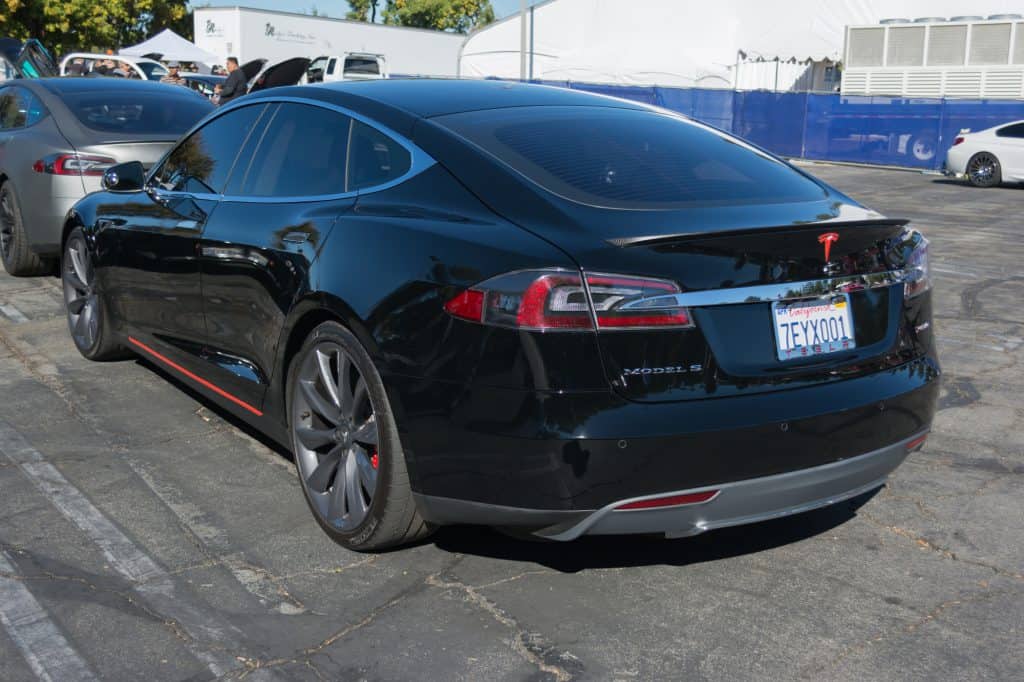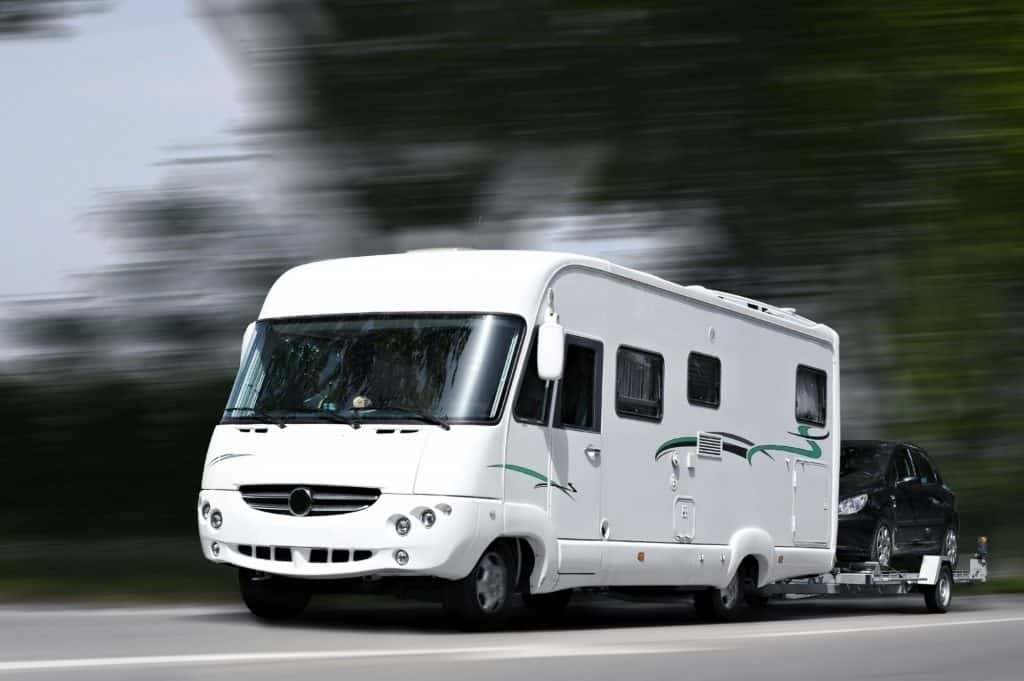In a pandemic age where international travel has become an impossibility for many people, the humble domestic road trip is making a resurgence. Those who own an RV know its tremendous value as the core of your road trip experience. It’s your home, your bathroom, your kitchen, your storage and, of course, your primary mode of transportation.
What about when you’ve pulled the RV up to your campsite or other pitch and you’re settling in to barbecue some dinner, and you realize you need some additional supplies from the local store. Are you going to pack up the entire RV just to drive to a local store to get napkins, paper plates or beer? It sounds like quite an upheaval.
The solution is simple: Flat tow your regular car behind the RV! The RV is certainly large enough to handle the capacity, and the car just trundles along at the back and can be called upon when you need to run to the store, or take a day trip. It’s the perfect solution, isn’t it? Well, if your car is a manual transmission car with an internal combustion engine, then you absolutely have no problem with towing, but if it’s an electric car like a Tesla, then you have a lot more to think about.
Teslas and Towing: Can it Be Done?

First let’s deal with flat towing, since that’s the method most would favor when bringing a car on vacation behind their RV. Flat towing is cheaper, requires less equipment and takes less time to rig up. The perhaps disappointing news for anyone looking to flat tow their Tesla is that it officially can’t be done.
Tesla has very clear and strict guidelines for vehicle transporters and roadside assistance operatives. The opening line of text reads as follows:
“Use a flatbed trailer only. Do not TOW! To avoid damage, follow instructions exactly as described.”
Tesla roadside assistance, towing guidelines
That’s a pretty clear message from Tesla, flat towing is right out. Unlike some other models such as the Chevrolet Bolt, for instance, there’s no guidance on towing a Tesla with two wheels down. That’s mostly because a lot of Tesla models are AWD. Having two wheels down only works on the Chevy Bolt because the two wheels that are down (the rear wheels) are not the drive wheels.
Tesla, therefore, operates a blanket policy of no towing. AWD is fast becoming the standard on all Tesla models, and therefore any kind of towing even with two wheels down is becoming an impossibility. The odd thing, however, is that Tesla is yet to release any kind of definitive statement saying why it is that they maintain this policy of no towing on any of the cars with any number of wheels on the ground.
Putting the Car in Neutral
The commonly proposed solution to the problem of towing electric cars, including Teslas, is to simply put them in neutral and then tow them behind. When they are in neutral, the electric parking brake is inactive and the wheels aren’t locked, so what’s stopping you from towing them? There are different concerns in different vehicles, but with a Tesla, the problem could likely stem from heat-related issues.
In a manual car, putting the car in neutral separates the transmission and the driveshaft, which ultimately removes any possibility of serious wear and tear while the car is being towed. Similarly, an EV in neutral isolates the motor control system so that it spins freely without applying any drive or regenerative braking force. There is no physical separation of the electric motor in an EV, but isolating it in this way has the same desired effect.
So why is it that we can’t put a Tesla in neutral and tow? The answer, as we mentioned, likely lies in the cooling system. When the car is turned off and in the neutral position, the cooling system is not running. When the cooling system is not running, many vital components on the car overheat while it’s being dragged along on the road. Many modern automatic transmission vehicles have the same problem.
Such overheating could cause very damage without any cooling system. Under normal conditions, coolant is set to every part of the car: front and rear motors, front and rear differentials, the transmission and more. If the cooling system is inactive, then no coolant is moving and friction will quickly generate heat that could damage any and all of these components. As it happens, they are expensive components to fix on a car that isn’t an expensive Tesla, so fixing them on your Tesla could seriously damage your vacation budget.
Furthermore, as we mentioned, the cooling system wouldn’t be active for any part of the flat towing process, which means that overheating could occur within just a few miles of setting off. Tesla components — as with many EVs — are made with extraordinary precision, and too much friction will quickly render that precision ended.
How Do Transporters Tow the Tesla Onto the Flatbed?
If the Tesla can’t be towed, then how do the roadside assistance teams get the Tesla onto the flatbed truck? They don’t bring a small crane with them, it’s typically either driven onto the flatbed, if possible, or towed. But how is it towed if towing is not possible?
Tesla issues very detailed guidelines which explain in detail how the car can be put into “tow mode,” connected to a tow chain, pulled onto the trailer and then secured in place. The key is keeping the gear in neutral and powering the Tesla off to ensure that the electric parking brake is inactive. Being powered off is important because if the Tesla is switched on, it will shift back into “Park” as soon as the operator or driver opens their door to get out of the car.
This kind of towing is possible firstly because it’s over a distance of several feet, not hundreds of miles. Second, it’s done at a snail’s pace compared to how you would be driving on your vacation road trip, which presumably would be a steady cruising speed of 50-60mph.
Even If Possible – Is Towing a Tesla Behind Your RV a Good Idea?
The only way to safely tow the Tesla over any meaningful distance, then, is using a flatbed trailer or dollies for both front and rear wheels. A flatbed trailer will cost you anywhere from $4,000 to $15,000 depending on its condition, size, brand and how advanced it is. If you know that you’re going to regularly transport your own Tesla on regular road trips, however, the additional cost might be worth it. You’ll also need somewhere to store that trailer, of course.
In other words, do something like the following (granted, the car behind towed isn’t an EV!):

The other method is to attach front and rear dollies to your Tesla and hitch the main dolly that raises the car up to the back of your RV. Because all the wheels will be off the ground, you can keep the Tesla in “Park” once you have positioned it and secured the car onto the dollies. The main issue with towing using front and rear dollies is how securely the wheels are fastened to the dollies, especially when traveling over long distances.
If you are going to tow using dollies, invest in quality equipment, and durable wheel fastening straps that will hold their position and last you a long time. When it comes to towing your Tesla behind the RV, you don’t want to be skimping on the budget.
Is It Ever a Good Idea?
With all these risks, is it ever a good idea to tow your expensive Tesla car behind your RV? Well, to say it’s never a good idea requires the use of logic that would also recommend never driving on the road at all because you could get into an accident. Anything bad could happen at any time for a number of reasons. It’s not a good logical reason to say “never tow your Tesla behind an RV.”
There are good reasons to take your car with you on an RV vacation, be it a Tesla or any other vehicle. It provides additional transport, especially when you’ve set up camp in one location and want to explore the surrounding area.
What Alternatives Do You Have?
As we mentioned above, there are two alternatives to flat towing:
- Purchase or rent a flatbed trailer and use that to transport the car
- Tow your Tesla on dollies either with front-wheel lift or rear-wheel lift
Of course, one other alternative is not to tow the Tesla at all, but instead drive it together with the RV and coordinate your journey as a group, like a mini convoy. This could add an aspect of fun to the trip, but may also be useful because it means more people are safely secured in car seats with seatbelts rather than possibly sitting loose or roaming around in the back of an RV while you’re driving along.
Another alternative is to rent a car from a location close to your destination. It’s more trouble, but would save mileage on your Tesla if you don’t want to add many hundreds or thousands of miles to the odometer over a short vacation period.
One other possibility is using your Tesla as the towing vehicle, and staying in hotels and motels as accommodation, or camping in tents which you can load into a trailer or roof compartment. We’ll deal with Tesla towing below.
Can You Use Your Tesla to Tow?
Yes, you can. Teslas can absolutely be used for towing. Below you’ll find the towing capacities of those Tesla cars that are made for towing.
- Model X: Towing Capacity of 5,000lbs
- Model Y: Towing Capacity of 3,500lbs
Some people have explored aftermarket solutions for tow hitches on the Model S and Model 3, but Tesla currently offers no official endorsement or tow options for either of these models. There is speculation and experimentation to show that both cars could tow as much as 2,000lbs if they had a tow hitch fitted. Doing so, however, risks voiding the warranty if you end up damaging your Tesla doing something that Tesla has expressly warned you against.
Conclusion: Can I Tow a Tesla behind an RV? Sure, but Do You Want to?
In the end, you have to ask yourself the question of whether or not it’s worth it to tow your Tesla behind your RV. Flat towing is out, so your only alternatives are flat-bed trailers and dollies, both of which will cost a considerable sum to purchase or rent. Teslas are a high-price car, and perhaps those with the money to buy Teslas can also afford to buy and store a flat-bed or dolly system. If so, that’s a neat solution.
There are plenty of alternatives, however, including using a larger Tesla as the towing vehicle and camping outdoors instead, or having another family member drive the Tesla separately. Both of these alternatives are safer and would help lessen the possibility of any expensive mishap on the road. In the end, you’ll have to make the choice that suits your family vacation best.